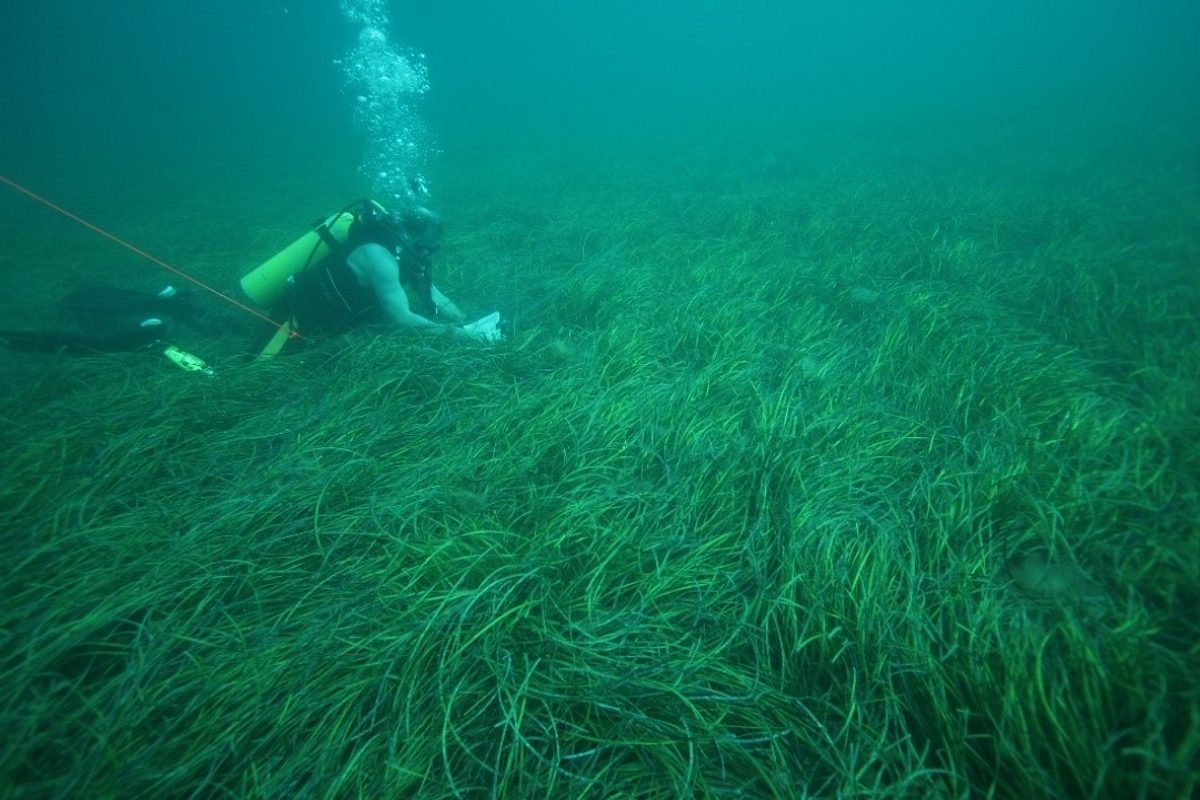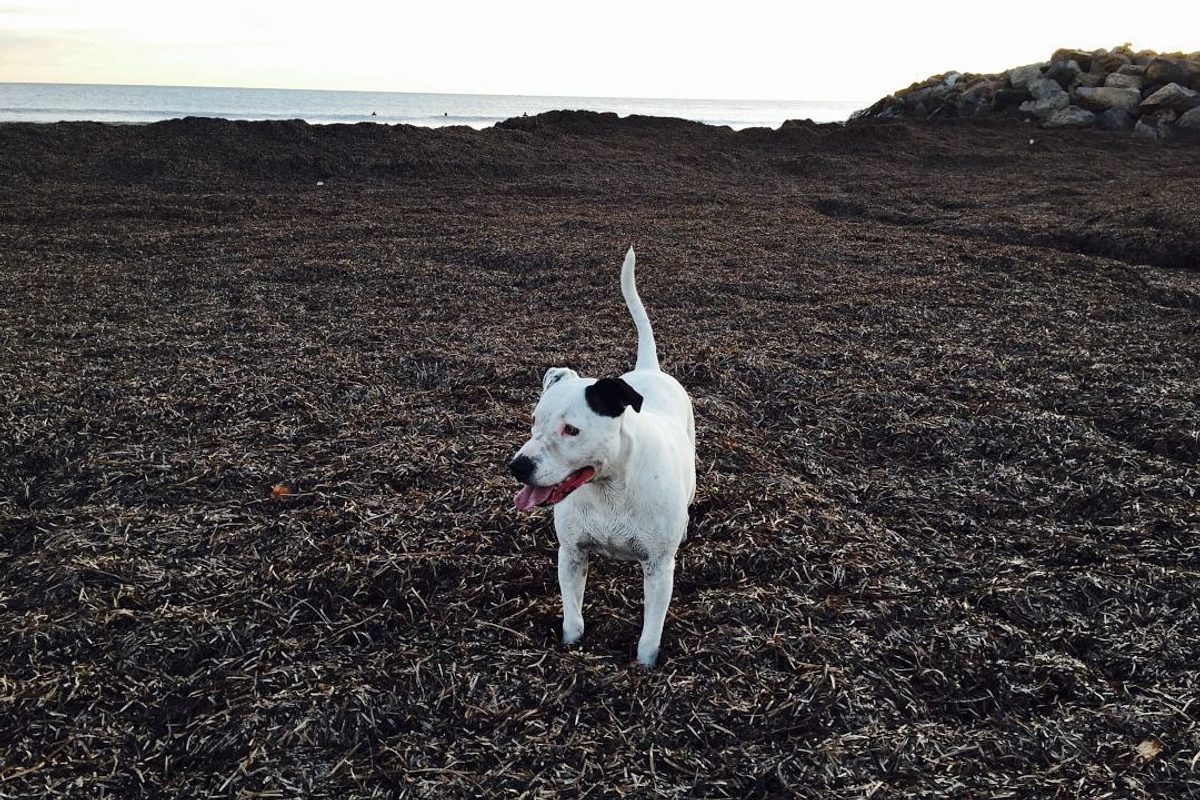
Everything you need to know about the seagrass wrack you see on SA’s beaches
During Adelaide’s cooler months, you may spot seagrass wrack along our shores – ‘wrack’ being the term used to generally describe the organic matter that washes up on beaches.
You might think it interferes with your beach walk, but learning a bit more about seagrass might change your mind.
Sea what?
First up, don’t be tricked. Seagrass is totally different from seaweed.
Seaweed is generally a catch all name for a variety of marine macroalgaes. In SA it is common to see large brown macroalgae (kelp) and smaller red and green varieties of macroalgae. These marine plants typically grow on reef or hard structures attached by a structure called a ‘holdfast’. It transports nutrients through its body by diffusion.
Seagrass is a actually a flowering plant that grows in shallow, sandy coastlines in sheltered coastal waters and utilises a root system and internal vascular system to transport nutrients around the plant.

Seagrasses are known as ecosystem engineers because they provide many ecological functions for the environment.
Seagrasses feed and home a long list of marine life as well as clean water, take carbon dioxide out of the atmosphere and generate oxygen.
One hectare of seagrass is estimated to be worth more than $26,000 per year, making it one of the most valuable ecosystems on the planet.
The biggest seagrass restoration trial in Australia is being done in SA
Seagrass restoration
Along the Adelaide coastline, improvements in infrastructure to reduce the amount of pollutants entering our coastal waters has resulted in the recovery of some of our seagrass beds. Work to restore seagrass has also been engaged in by SARDI since 2002 using sand filled hessian bags to facilitate natural recruitment, and also to plant seedlings directly into the sand bags. Since 2020, OzFish have also been running their ‘seeds for snapper’ program that involves volunteers collecting seagrass pods washed up along the beach to then be planted into sand bags that are then placed in suitable growing locations along the coast.
Wracking is vital for the coast
Seagrass plants generally shed their leaves annually in the autumn and winter months.
Due to weather and high tide, particularly during winter, seagrass wrack accumulates along many of Adelaide’s beaches.
The seagrass wrack plays an important role in sustaining the beach and marine environment. This includes nutrient recycling, providing food and habitat for marine life and protecting the coast from storms.

Spot seagrass wrack on our metropolitan coasts
Seagrass wrack abundance is largely based upon wave and tide action – making it highly seasonally variable.
Most commonly though, south-westerly winds push the seagrass wrack onto our northern beaches such as Semaphore and Largs Bay. At times, strong winds and high tides have caused seagrass wrack to accumulate on a number of other metropolitan beaches including Glenelg, Brighton and Seacliff.
Seagrass wrack helping to stabilise the dunes at West Beach
As part of the West Beach dune restoration project, seagrass wrack has been deposited on the dunes to help capture wind-blown sands and begin the process of building and protecting the foredunes.
Over time, our harbour entrances can also accumulate excess seagrass wrack and become a navigational hazard for boats. Severe accumulations of seagrass at Glenelg and West Beach is dredged with land-based equipment (excavator and trucks) and also deposited on the dunes at West Beach to assist in erosion prevention.
Washing out the wrack
It’s difficult to predict how long seagrass wrack will remain on Adelaide’s beaches.
Typically by the start of summer each year the winter seagrass wrack will have been washed back into the ocean naturally, or will have gradually biodegraded and been absorbed into the beach system.
So venture out and test your new knowledge and appreciation of a natural marine asset. Take your furry friend and explore!
To find out about how we’re securing the future of our coastline, visit the Department for Environment and Water website.
Main image: seagrass at Largs Bay (image courtesy of Bill Doyle)
This story was originally published in July 2016 and has been updated with current information.





